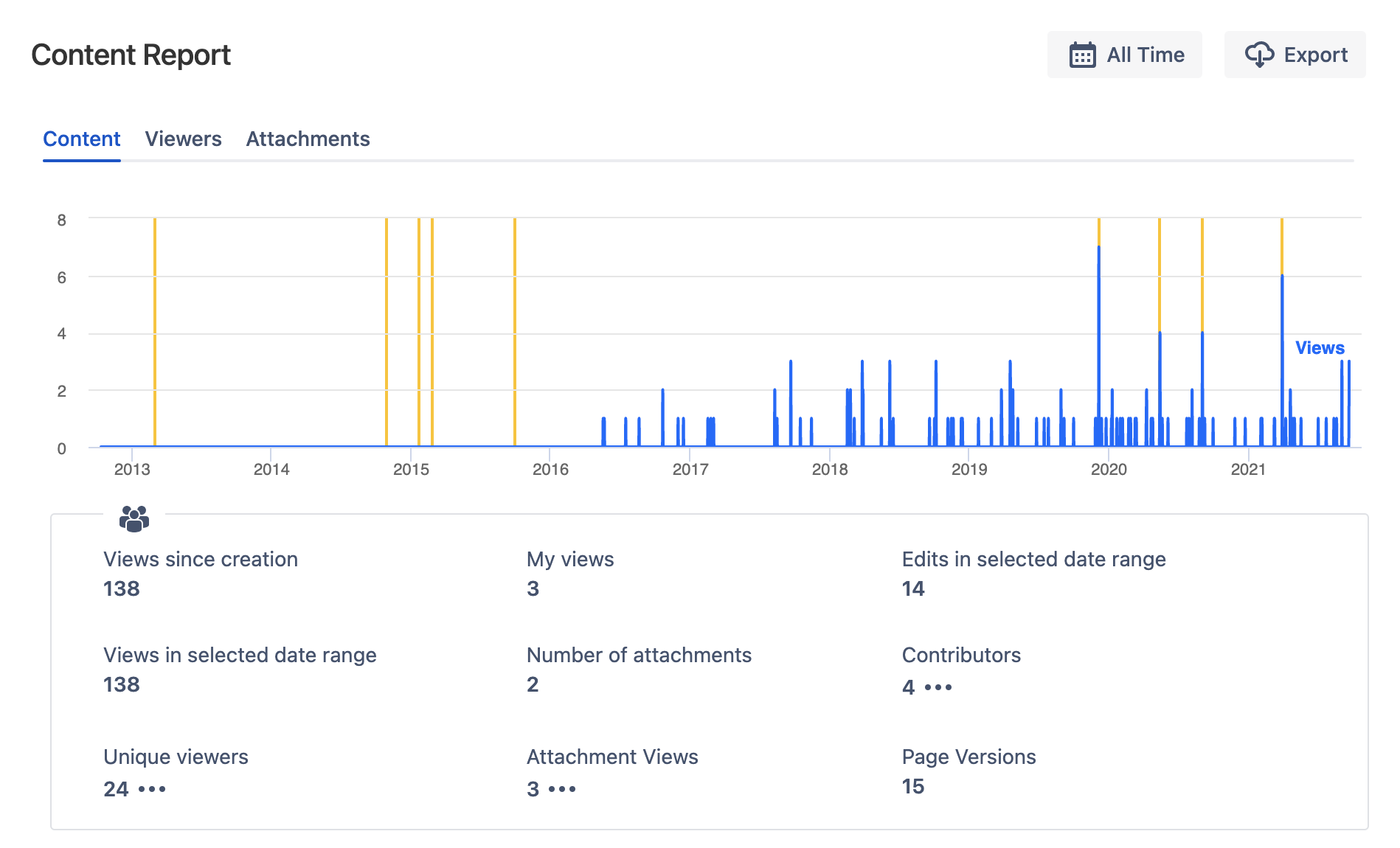What counts as a view in Viewtracker?
If you use Viewtracker in combination with Google Analytics, Matomo or another analytics tool, you will soon notice that the different tools deliver different view counts. This article is to explain how we measure a page view in Viewtracker.
Scope: Historically, Viewtracker has measured user interactions on pages and blog posts and aggregated them in various reports. It did not measure views, edits etc. of dashboards and user profiles.
However, tracking these Confluence components and content from 3rd-party apps is possible since September 2023 with the new Confluence URL Reports.
General explanation
We want Viewtracker to output relevant numbers that are instantly useful to you in its reports. These numbers respect Confluence logic instead of simply counting every single page call. Simply put, we prioritize quality over quantity.
The Viewtracker app analyses page views according to specific criteria before they are even stored in the Viewtracker database and appear in the reports. This practice causes different view counts than other tracking tools that don’t consider the context.
Viewtracker also only tracks users' views. Automations by Confluence apps, API Requests etc. usually don't trigger a view.
Specific criteria: What counts as a page view in Viewtracker Server/DC?
The Viewtracker app applies the following evaluation criteria before the loaded page counts as a view:
Is the page accessed within the specified blocking time? (5 seconds by default, can be changed in the app settings)
We implemented the blocking time so that accidental, manipulative or technically required reloads of the page are not included in the count.
The blocking time is also applied when creating or editing pages: Page loads within the blocking time after a page creation or an edit do not count as views.Does the viewer belong to a user group that has been excluded from tracking? For example, are anonymous users being tracked? See how to disable tracking for user groups
Is tracking enabled in this space at all? See how to disable tracking for spaces
Does the viewer have permission to view the page? (This is to exclude manipulation of tracking events and automated accesses.)
The answers to the questions above depend on the Viewtracker app settings. An administrator can edit these. See all options listed here: Viewtracker Administrator's Guide
Other differences in view counts
Viewtracker only counts page views starting on the day the app was installed on your instance. However, you can import existing views and display them in your reports.
If you have been using Viewtracker for a long time (version <5 or any version released before 2017), the long-term tracking might look like in the screenshot below. Back then, auto-tracking for all pages was not yet possible. Instead, you had to set the Viewtracker macro on all pages you wanted to track.
This means: If you are looking at the Content Report of a page with a long history and set the date range to “All Time”, the page views might only start appearing around 2017. However, the report will show the number of edits and their timestamps over the entire page history.

Content Report set for “All Time”, with views (blue bars) only appearing around 2017. Edits (yellow bars) have been counted and marked since the page’s creation in 2013.
Related content
How does Viewtracker store page view data?
